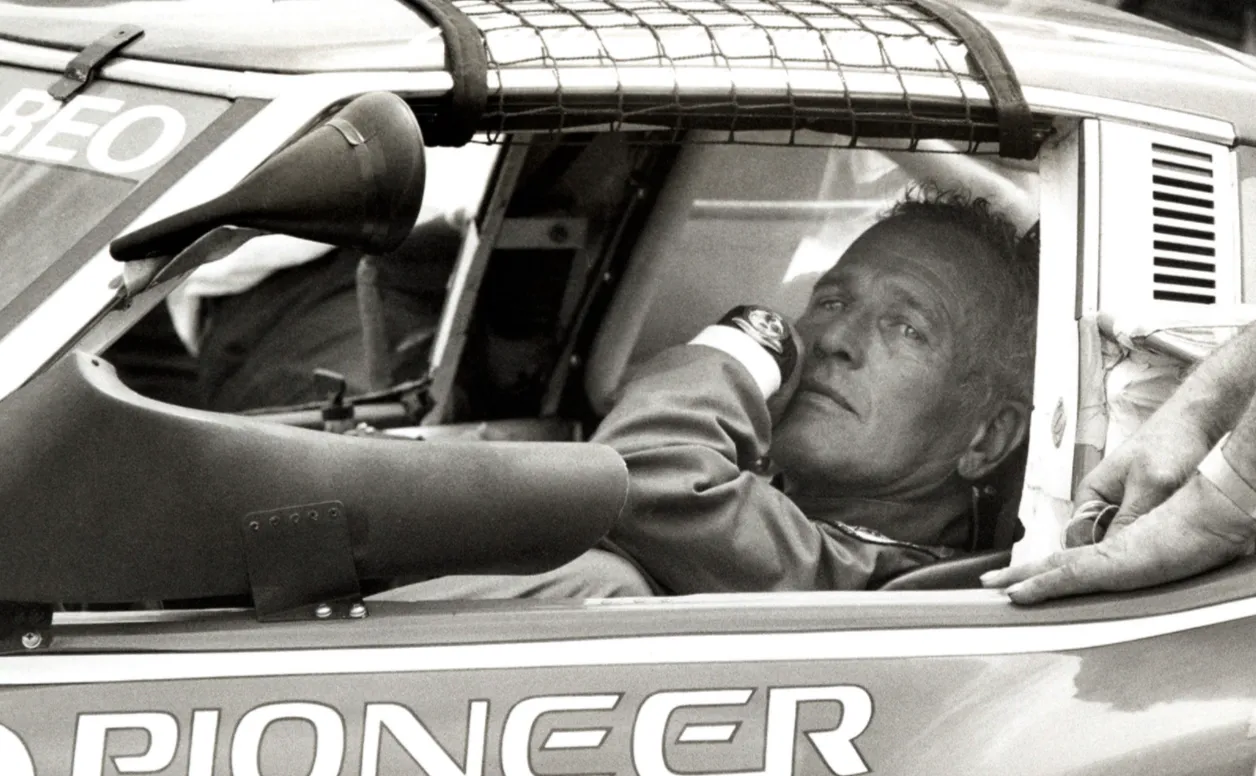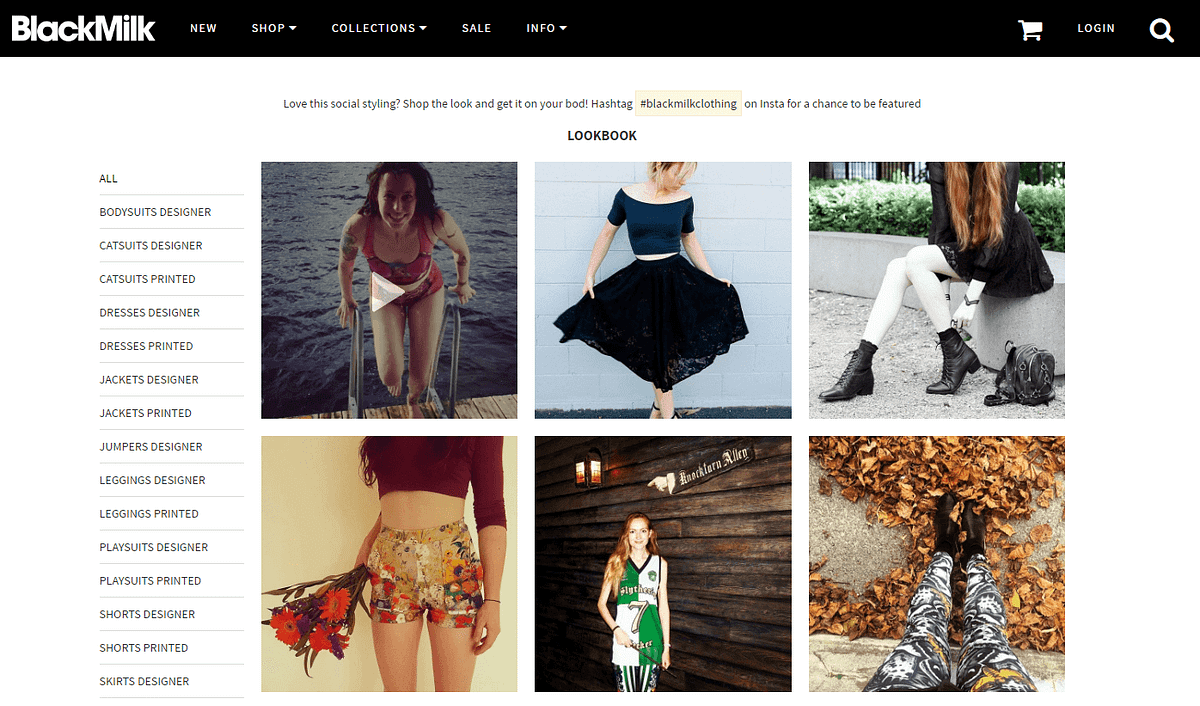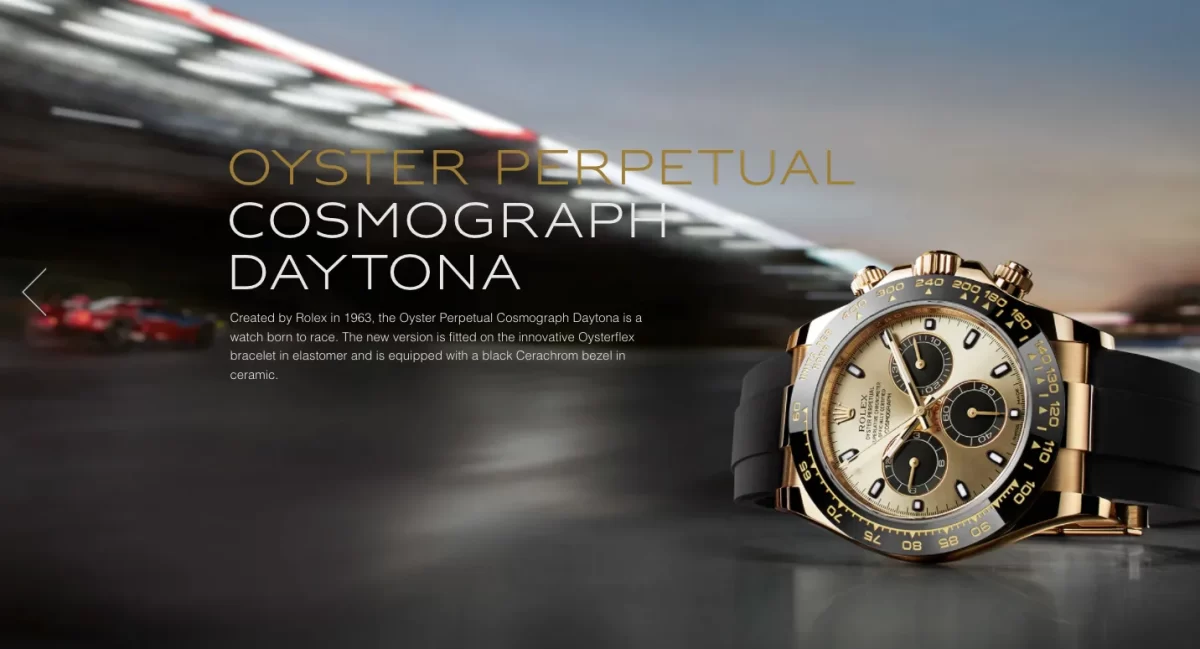Last Updated on August 31, 2023 by David
What do you know about the following product?

Rolex Cosmograph Daytona 2017. Image via Rolex.com.
The only answer you really need to know is that you simply can’t go out and just buy one anytime you want. It costs somewhere between $12,000 to $50,000 and comes with a 2-year waiting list.
Veblen goods are products that command high prices not only because they’re expensive or exclusive but also because they offer exquisite quality rather than simply being rare, elusive, and hard to find alternatives for. In fact, Veblen goods aren’t hard to identify at all. They exist in plain sight and are notorious for making a big splash about their exclusivity. The differing ideology behind Veblen goods is that they’re marketed as such. Veblen goods target the affluent, the sometimes vain, and most importantly, people who can afford to be more exclusive than you or me.
One can argue in many ways whether having Veblen goods for your brand is a good or bad thing. The simple fact remains however, not every brand is qualified to support a Veblen product. Without a strong brand presence, marketing engine, and distribution strategy, Veblen status is as unique and rare as unicorns.
Veblen goods contradict the basic law of demand — which states that quantity demanded has an inverse relationship with price — because of their snob appeal. If the price of a coveted and expensive product is increased, it may actually enhance its appeal to the status-conscious, since it is now further out of reach for the hoi polloi. — Investopedia
Regardless of how you feel about Veblen goods, there are some key attributes that make achieving Veblen status great for your business. A huge part of this process is creating brand relevance which comes from being present in the right places at the right time and generating engagement by saying the right things to the right people.
Before we circle back to the topic of Veblen products and how you can be just as successful as Rolex in your own way, let’s take a quick detour into the history of the Daytona and how long it’s taken Rolex to build this brand equity.
The Rolex Daytona
For most of Rolex’s history in the watch industry they’ve never been known for their chronograph watches (a watch with stopwatch capabilities). The first real Rolex chronograph that housed a mechanical movement produced by Rolex itself in an Oyster case (a Rolex specialty) wasn’t released to the market until 1955. They were labeled simply as a “Rolex Chronograph”. Between 1955 and 1961 only 500 were made before it was discontinued.

Rolex’s venture into the chronograph vertical wasn’t without reason however. In the 1930s, Sir Malcolm Campbell, one of the most decorated racers in the original Daytona racecourse in Florida, personally thanked Rolex for their durable timepieces. It was this moment that gave Rolex inspiration for expanding their product lineup. However, it wasn’t until the mid 1960, after many failed attempts at marketing the series we know of today as the Daytona, did Rolex finally hit its stride.

In 1963, one year before the official release of the modern day reference of the Daytona, Rolex secured the coveted “Official Timekeeper” for the Daytona International Speedway and was introduced to the world of motor racing for the first time. However, the person that singlehandedly turned things around for Rolex’s chronograph series was actually Paul Newman, the famed Hollywood actor, IndyCar racing driver, entrepreneur, and philanthropist. Newman’s love and devotion for the Cosmograph Daytona was immediately apparent, wearing the specific watch (Reference 6239), in many public appearances and sealing its position as the pinnacle of “race car driver equipment”.
2012 marked Rolex’s 50-year anniversary as the official timekeeper for the Daytona International Speedway. Since 1962 however, Rolex has had its fair share of success stories as a brand in the world of motor racing. This long running history in high stakes racing and exclusive celebrity-driven marketing is what continues to present Rolex chronographs as a Veblen halo product for many watch lovers and collectors.

Rolex Daytonas, both new and especially old, attract buyers of a different class. It’s not uncommon for new purchasers to wait for more than 2 years to get their hands on one that retails anywhere between $12,000 to $50,000 . Older “Paul Newman” Daytonas often auction at over $100,000. Pre Daytona chronographs are even more rare and auction for even higher. In fact, according to aBlogtowatch.com, Daytonas in general have been rising in cost dramatically over the years even while adjusted for inflation.

 Rolex Daytona purchasing power. Source: aBlogtowatch.com.
Rolex Daytona purchasing power. Source: aBlogtowatch.com.The Rolex Daytona is a clear representation of a Veblen product. Over the years, the Daytona has not increased in overall relative prices, the average consumer’s purchasing power of a Rolex Daytona has decreased, putting it further and further out of reach. And yet, the Daytona is more desirable than ever before. How does Rolex do this? And is Rolex the only brand capable of doing this?
Creating your “Rolex Daytona”
The market for luxury timepieces is unquestionably complex. We can’t all be Rolex nor all have Rolex’s capabilities as a brand. Even so, the process of experimenting with a Veblen product as a means to increase brand exposure and traction is interesting enough to explore. If anything, the thought process that goes into marketing a Veblen product is in itself educational and can help you discover new customer niches and edge cases where supply and demand metrics move outside their normal boundaries.
Creating emotional content
Most of the Rolex Daytona’s appeal is connected to the spirit of motor sports, racing, and the essence of perseverance. And while many Rolex fans admire its technical intricacies, the story and emotional buildup behind every Rolex watch is immediately obvious.
The same can be said for many luxury brands carrying cohorts of Veblen products: Louis Vuitton, Bentley, Breitling and many more. Many marketers leverage sensory-heightening methods to create an emotional response from their audience. When brands are able to effectively leverage emotional content, attention is drawn away from factual or technical aspects of a product. For the Daytona, no marketing content speaks to its mechanical ingenuity, material build qualities, or even price.
Emotional engagement with the target audience bypasses the need to speak about the product itself and directly increases memorability and engagement with the brand itself. Another great example of great emotional content comes from Coca Cola. Even though it’s not a Veblen product, Coca Cola creates an emotional connection to customers using design ethos such as nostalgia, families, and friends in its marketing. Through communicative advertising, strong brand colors, and unrivaled distribution channels, Coca Cola is a “status” symbol around the world. Yes it’s a soft drink but it represents a lifestyle that’s closely correlated with freedom, love, and family.
The takeaway is this:
- Don’t just focus on statistics, specifications, and “documentation”. Basically, shift your content and marketing direction to things that cannot be conveyed by numbers and text.
- Boil down your product to its essence. What should your customers feel when they wear or use your product? Help customers hold on to that feeling throughout your branding. Sell bikinis? Don’t focus your marketing on the material or the “fit”. Instead, help customers envision themselves wearing your product on the beaches of Tahiti.
- Your product is larger than life (even if it’s not). Don’t be afraid to exaggerate. If Rolex is able to instill the entire essence of motor racing into a single watch, it’s not far fetched to believe that a foam model airplane can embody the spirit of flight or the childhood dreams of becoming a fighter pilot.
Building access but limiting supply
One of my wife’s favorite brands is Black Milk Clothing. Regardless of reasons known and unknown, the force is strong with this non-Veblen eCommerce brand. My wife is also big (BIG) fan of one of their mottos: “Give me nylon or give me death”. According to Startupdaily.com:
Anti-marketing is the new marketing’: Black Milk Clothing’s hipster philosophy is pivotal to its growth. The prominent rise of Black Milk Clothing since 2008 has been about building an online cult following as much as it has been about just selling clothes. — Startupdaily.com
 Black Milk Clothing features real Instagram followers.
Black Milk Clothing features real Instagram followers.With hundreds of Facebook Groups around the world and tens of thousands of members known as “sharkies”, Black Milk Clothing is all about having and enabling a genuine identity and distinct voice for their patrons. The founders, James and Cameron put it eloquently that “It should never be about selling…the three key factors for our success were authenticity, storytelling, and accessibility”. Black Milk Clothing values not only their own story but also their customers’ stories and they’re all baked in a business model that’s both unique and elusive by design.
You see, Black Milk Clothing issues just 100 designs a month and many sell out in an instant. To most sharkies, Black Milk is more of a lifestlye than a product and Black Milk Clothing certainly understands this.
Sometimes we like to make products limited so that the people that do get them get to feel really special. — Black Milk Clothing
Here’re some key takeaways from Black Milk Clothing:
- Building a unique brand not only requires a good story and a unique statement in society but also a unique business model. The fact that Black Milk Clothing is not a Rolex speaks volumes about the successes any new brand can attain. Explore your unique position, product, and business model.
- Limiting your supply is a valid business model when you’ve acquired enough cachet and cashed in enough eyeballs. People do want to be unique no matter what you sell and plenty of companies (like Black Milk Clothing) have been able to generate hype and cachet by tightly controlling their distribution. They’re able to provide just enough to never overshadow the demand by implementing limited edition runs and exclusive releases.
Transitioning to lifestyle products
Fostering a positive emotional connection with your audience enables them to look at your products differently than your competitors. While others are busy touting the technical or tangible advantages of their product, your emotional content has helped your product transcend beyond the tangible and into a category of its own. Apple and Nike don’t necessarily sell “phones”, “watches”, or “shoes” based purely on technical prowess alone. Instead, they’re lifestyle products that are deeply interwoven into the lives of millions through an ecosystem of devoted fans.
https://www.youtube.com/watch?v=BNpiwOkKIJ8
When you’re able to position your products differently as a lifestyle necessity, customers alter their behaviors to fit your product rather than your product designed to fit the specific needs of customers (as counterintuitive as that may sound). Macbook Pros are not the most technically advanced computers on the market and neither are Nike’s pedestrian lineup of shoes but both sell well because they’re lifestyle statements rather than “products”. There are certain “Veblen” qualities in all of Apple’s and Nike’s products even though none are. They may be expensive but do not embody the inward demand qualities like the Rolex Daytona. People don’t mind a lower product-to-dollar ratio because Apple and Nike products represent something more than just a computer or a pair of shoes.
Want to build a lifestyle?
- Look for synergies between your product and your customers. Help foster an ecosystem of mutual support by enabling your customers to be evangelists for your brand. Rolex speaks lifestyle when they enroll pinnacle athletes like Roger Federer to speak to followers of their philosophy.
- By definition, lifestyle defines how a person or a group of people choose to live. In marketing, lifestyle can be crafted to appeal to consumers by association with a desire. Don’t be afraid to show off your product’s lifestyle even if it creates controversy. In most cases, controversy is what’s needed to fuel a lifestyle brand. Many say Rolexes are for the ostentatious and that Apple products are for elitists. It’s better to stand for something than nothing at all.
Storify your brand ethos
There’s always a good story behind a set of principles and every successful brand is able to invent their own ethos even if they’re not Veblen products. Whenever the subject of brand ethos come up, GoPro always comes to mind. Grounded in the ethos of being the “independent athlete” and tapping into the “heroic” nature in all of us, GoPro is always able to create an emotional response that results in the need to buy a Hero and get outdoors. Audiences are constantly enthralled with the excitement that’s around them and the need to capture those experiences are always channeled through any GoPro.
- Focus on delivering stories for your brand (and not a specific product) and involve your potential customers in the creative process. Luxury lifestyle brands are known to always invest in environments to allow their customers to feel the brand’s cachet — and build a strong, intangible emotional connection about feeling a certain way.
- A good brand needs to stand for something. Don’t be afraid to hold the hands of your customers and make a statement. If you’ve read or seen Scott Pilgrim vs. The World then you know what it means to be rebellious and stand for something. When you’ve established the statement, grow a community of followers that feel the same way.
A phrase we often tell our customers here at Reamaze is: Distribution is marketing. Marketing is distribution. And that’s really the crux of it. You don’t need to be Rolex to sell “Veblen” products. Your brand is the Veblen product. Fortunately, there’s no barrier to entry even if you’re the new kid on the block. Anyone can be Rolex if anyone can tell the story right. Strong brands are results of strong stories that stand for something. Strong products come from communities that come together to drive value. And strong marketing comes from your ability to be unique with your business model.
Interested in what else we have to say? Make sure to recommend this article by clicking the heart and follow us for more stories about startup life, customer service, and tips on treating customers right.
You can also find our multi-brand, multi-channel customer service platform at https://www.reamaze.com. Follow @reamaze.

